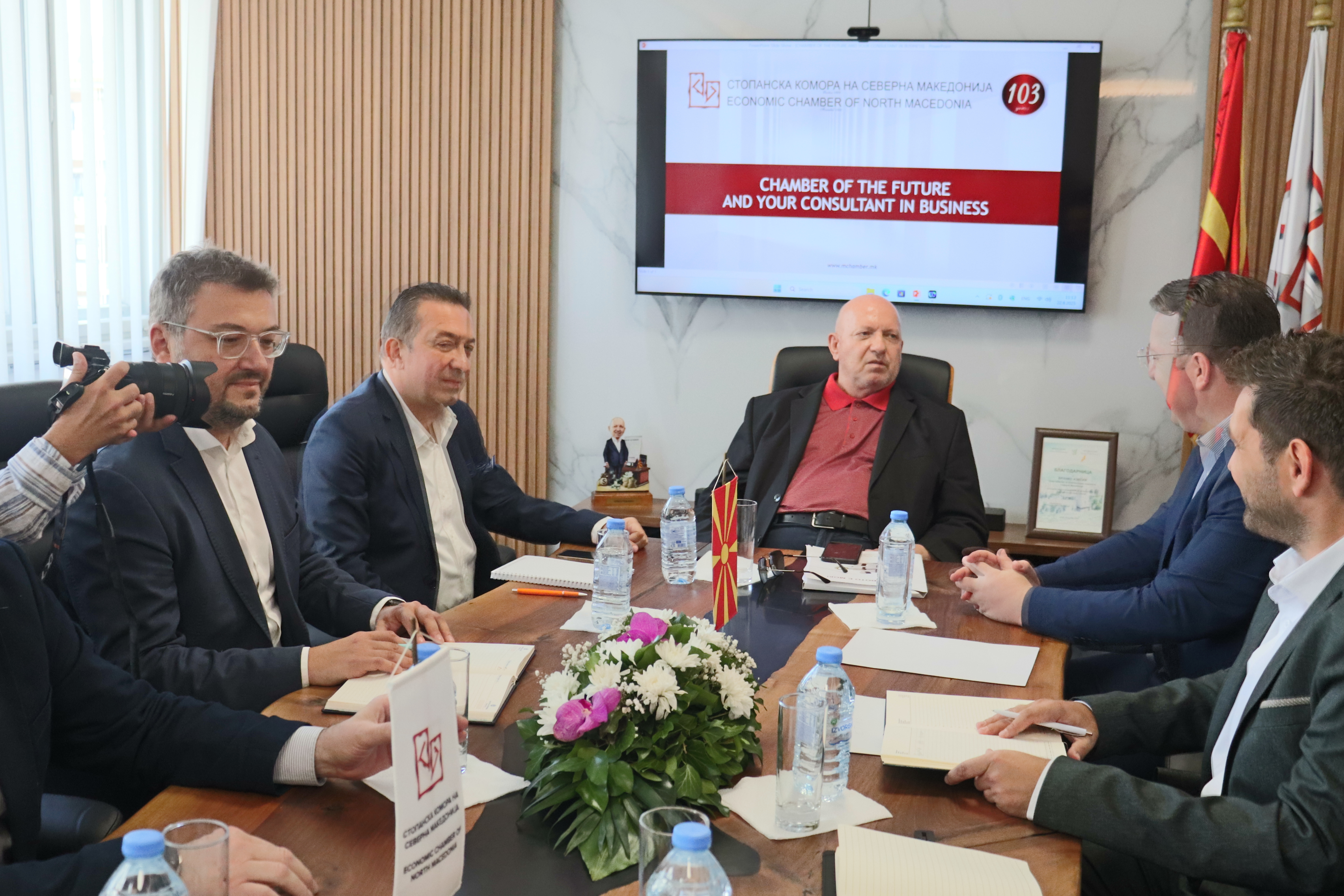„Dimitrie Cupovski“ 13, 1000 Skopje +38923244000 ic@mchamber.mk
„Dimitrie Cupovski“ 13, 1000 Skopje +38923244000 ic@mchamber.mk

Deputy President of the Government Aleksandar Nikoloski held a working meeting at the Chamber, at the invitation of the ECNM President, Branko Azeski. The meeting was also attended by members of the Management Board – Ivan Boshkovski of Fersped AD Skopje and Radoš Vukićević, MBA, of Alkaloid AD Skopje – as well as part of the Chamber’s leadership: Antoni Peshev, MBA, Executive Director, Biljana Peeva-Gjurikj, Operations Director, and Daniela Mihajlovska-Vasilevska, Advisor on export-related activities, in the Office of the Chamber President.
The meeting addressed a number of business-related topics, with special emphasis placed on the new European Union protocols:
- EES (Entry/Exit System), and
- ETIAS (European Travel Information and Authorization System),
as two separate systems the EU is gradually introducing for the management and control of entry into the Schengen Area.
The EES is set to be applied as of 2025, and ETIAS as of 2026. The business community has indicated that these protocols will represent an additional burden for companies and will place transport operators at a disadvantage compared to their EU counterparts, due to Schengen rules that limit the period during which professional drivers may perform bilateral transport services (a restriction of 90 days within any 180-day period).
According to the latest information, the Entry/Exit System (EES) is scheduled to start on 12 October 2025, to be implemented gradually over a six-month period across 29 European countries (the 25 EU member states that are part of the Schengen Area, plus Iceland, Liechtenstein, Norway, and Switzerland). Full implementation is expected to begin on 10 April 2026, from which point the length of stay will be calculated electronically. At present, under the second system, ETIAS, no action is required from travelers. The European Union will provide additional information on the exact launch date of ETIAS several months prior to its introduction.
President Branko Azeski informed that the Chamber is closely following these developments. He announced that in the upcoming period, through the two regional business associations – WB6 CIF and ABC – discussions on these current issues will be opened at forthcoming events in September and October, where the participation of representatives from the European Union is also expected. In his remarks, Azeski also placed emphasis on the upcoming infrastructure conference that the Chamber will organize next month, with the aim of sending a message that through public-private dialogue, it is necessary to gain a clear picture in the country of the nature of investment activities and the trend of new employment.
Deputy President of the RNM Government, Aleksandar Nikoloski, announced that there is active dialogue with EU representatives regarding travel rules for the country, and that the Government is prepared to do everything within its power to make entry into the EU easier for Macedonian citizens. “Essentially, what we have been informed,” said Nikoloski, “is that the existing EU system is being digitalized; the world and technology are moving forward, and in that regard, it is necessary to respect what the EU is introducing on the one hand, but on the other, the procedure for entry of Macedonian citizens should not be complicated. Of course, the Ministry of Foreign Affairs and the Ministry of European Affairs are in communication and, as a Government, we will coordinate when it is introduced,” emphasized the Deputy President of the Government.
The working meeting also noted that activities in road infrastructure are gaining momentum, with the strategic partnership agreement with the United Kingdom representing a particularly significant positive signal for the country.